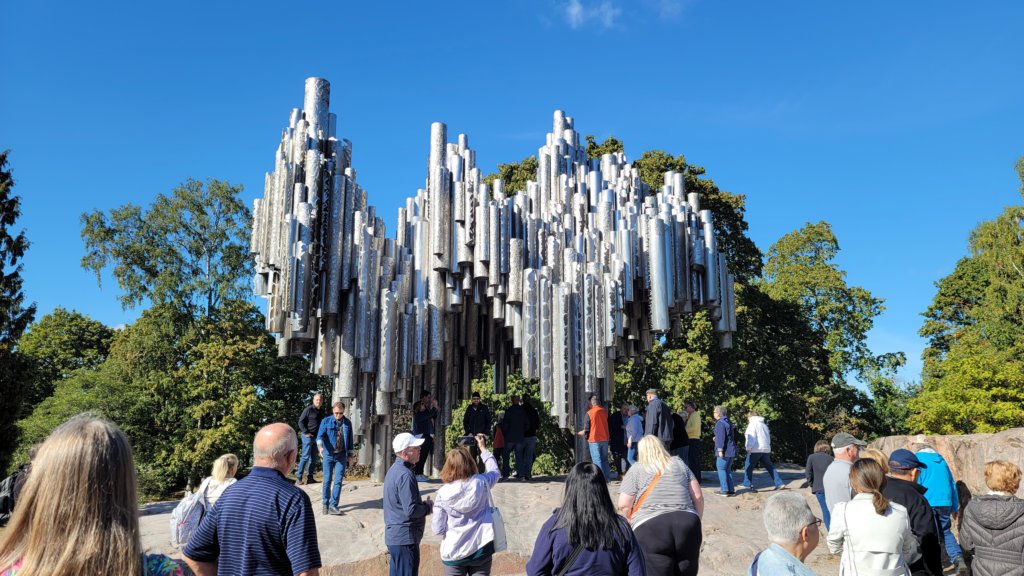| << Previous | Index | Next >> | ||
 |
 |
 |
 |
 |

The monument is a sculpture by Finnish artist Eila Hiltunen titled Passio Musicae[1] and was unveiled on September 7, 1967. The sculpture won a competition, organised by the Sibelius Society, following the composer's death in 1957. The competition took two rounds after one early winner was abandoned. Originally it sparked a lively debate about the merits and flaws of abstract art and although the design looked like stylised organ pipes it was known that the composer had created little music for organs. Hiltunen addressed her critics by adding the face of Sibelius which sits beside the main sculpture.[2]
It consists of series of more than 600 hollow steel pipes welded together in a wave-like pattern. The monument weighs 24 tonnes (24 long tons; 26 short tons) and measures 8.5 by 10.5 by 6.5 metres (28 ft × 34 ft × 21 ft). Hiltunen's aim was to capture the essence of the music of Sibelius.
A smaller version of the monument, "Homage to Sibelius", is located at the UNESCO headquarters in Paris.[3] A work with a similar concept, also designed by Hiltunen, is located at the grounds of the Headquarters of the United Nations in New York City.[4]
Photo album created with Web Album Generator